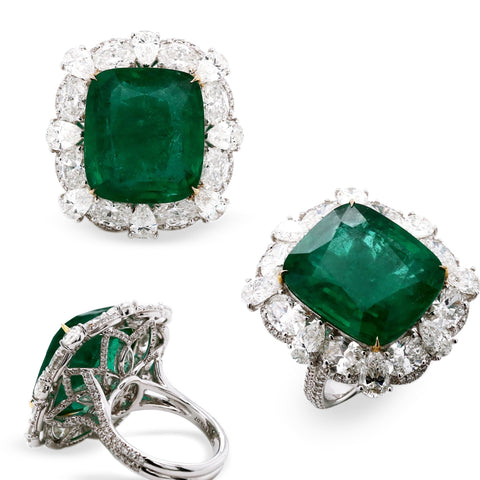The Emerald Enigma: Understanding the Practice of Oiling and Its Alternatives

The Emerald Enigma: Understanding the Practice of Oiling and Its Alternatives
Emeralds, with their lush green hues, have been a symbol of opulence and mystique throughout history. These gemstones, however, are often accompanied by a lesser-known aspect of their journey - the practice of oiling. While some emeralds undergo this treatment, others do not. This article delves into the reasons behind this practice and explores the world of oiled and non-oiled emeralds.
The Nature of Emeralds
To understand the practice of oiling, one must first comprehend the inherent characteristics of emeralds. Unlike other gemstones, emeralds often contain inclusions and surface-reaching fissures. These natural features, known as "jardin" (French for garden), contribute to the stone's unique appearance but also make it prone to brittleness and clarity issues.

Why Oiling is Done
Enhancing Clarity and Appearance
The primary reason for oiling emeralds is to enhance their clarity and overall appearance. The oil seeps into the fissures, reducing the visibility of these imperfections. This process improves the gem's transparency and color, making it more appealing to the eye.
Protecting the Stone
Oiling also serves a protective function. By filling in the cracks and crevices, the oil strengthens the stone's structure, reducing the likelihood of damage during cutting, setting, or wearing.

Types of Oils Used
Traditionally, natural oils like cedar oil are used due to their minimal color and excellent refractive index, closely matching that of emeralds. However, advancements have led to the use of synthetic oils and resins, which can offer longer-lasting results but are often viewed less favorably due to their artificial nature.

The Case for Non-Oiled Emeralds
Despite the benefits of oiling, there is a growing market for non-oiled emeralds. The reasons include:
Purity and Naturalness
Many purists and gem enthusiasts prefer their emeralds as natural as possible, valuing the untouched, raw beauty of the stone over enhanced clarity.
Value and Rarity
Non-oiled emeralds, especially those with minimal inclusions, are rare and thus often command a higher price in the market. They are considered more valuable due to their natural state and exceptional clarity without human intervention.
Durability Concerns
Oiling is not a permanent treatment. Over time, the oil can dry out or be inadvertently removed during cleaning, leading to a change in the stone's appearance. Non-oiled emeralds do not face this issue, making them more appealing to those concerned with long-term durability and maintenance.

Conclusion
The decision to oil emeralds or opt for non-oiled ones depends on a variety of factors, including aesthetic preferences, value perception, and practical considerations. While oiling can significantly enhance the appearance and durability of these gemstones, the allure of non-oiled emeralds lies in their natural, unaltered state. As the gem industry continues to evolve, the importance of informed choices and ethical transparency remains paramount, ensuring that the emerald, in all its forms, continues to captivate and enchant the world.